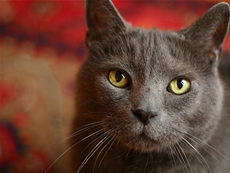That satisfying crunching sound
If you’ve ever heard a cat chowing down on dry food, you would assume they are enjoying it, and with good reason, because the crunchy quality of dry food is similar to the crunch they would find in the bones of birds and mice. While an entirely dryfood diet has its drawbacks, dry food not only provides the “crunch factor,” but also does a better job than canned food of cleansing tartar from the teeth and gums.











